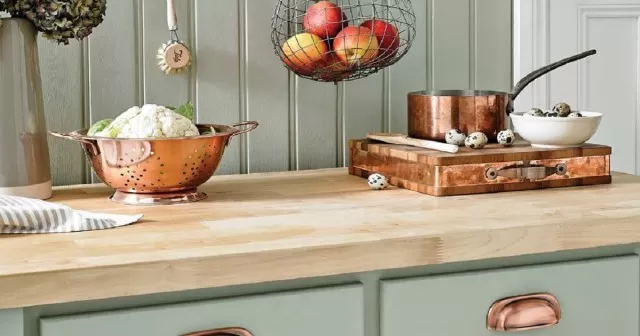When it comes to cleaning your home, some areas are clearly in need of attention, like the bathroom floor and kitchen countertops.
Kitchen Handles

Kitchen handles are frequently touched, whether it’s to open the refrigerator door or any other cabinet, even after handling raw meat.
Over time, these handles can become breeding grounds for germs and bacteria. To combat this, make it a practice to scrub down kitchen cabinets and appliance handles at least once a week, or immediately after touching them with messy hands.
You can do this using a cloth and a disinfectant spray or a mixture of one part hot water and one part vinegar.
Toothbrush Holder
Maintaining a clean toothbrush holder is just as crucial as keeping your teeth clean.
To do this, you can either toss the holder in the dishwasher once a week for a Thorough Cleaning or sterilize it by hand using hot water and soap. Additionally, it’s a good idea to regularly clean your toothbrushes, especially during flu season. Boil the toothbrushes in water for two to three minutes to ensure they stay germ-free.
Remember, an immaculate and hygienic home involves addressing these often-forgotten areas and items, contributing to the well-being and safety of your household.
Computer Accessories

Consider all the times you’ve had a cough, sneeze, or used your computer while dealing with a cold or allergies.
Now, try to recall the last time you gave your computer mouse and keyboard a thorough cleaning. To maintain a hygienic workspace, cleaning your desk and computer peripherals is essential, effectively reducing the risk of spreading bacteria and germs in your office.
Here are a couple of methods you can use:
Use disinfecting wipes to wipe down your desk, including the keyboard and mouse.
This will help eliminate bacteria and prevent the transmission of germs in your workspace. For a deeper clean, detach your computer’s keyboard and mouse.
Then, dip a soft-bristled toothbrush in Soapy Water and gently scrub the surface. This method not only removes visible grime but also ensures a more sanitary work environment.
Place Mats
While placemats are excellent for protecting wood surfaces from Food Stains, they can accumulate dirt and grime quite rapidly.
To maintain their cleanliness, follow these steps:
Rinse plastic or vinyl placemats with warm water and soap, making sure to clean them thoroughly.
Allow them to dry completely before placing them back on your table. For fabric placemats, toss them into the laundry machine along with similar-colored linens.
However, if your placemats have embroidery or delicate features, it’s best to hand-wash them to prevent damage.
Handrails and Doorknobs

Handrails and doorknobs are frequently touched surfaces that can harbor pathogens.
To ensure these areas remain clean and safe, incorporate the following cleaning routine:
For wooden handrails, use a microfiber cloth dampened with a solution of hot water and vinegar or warm, soapy water.
Afterward, wipe them dry with a polishing cloth to maintain their appearance. Apply the same cleaning routine to doorknobs, wiping them down regularly to prevent the accumulation of germs and bacteria.
By giving attention to these often-neglected areas and items in your home, you can create a cleaner and healthier living environment, reducing the risk of illness and maintaining a more hygienic space for you and your family.
*The information is for reference only.